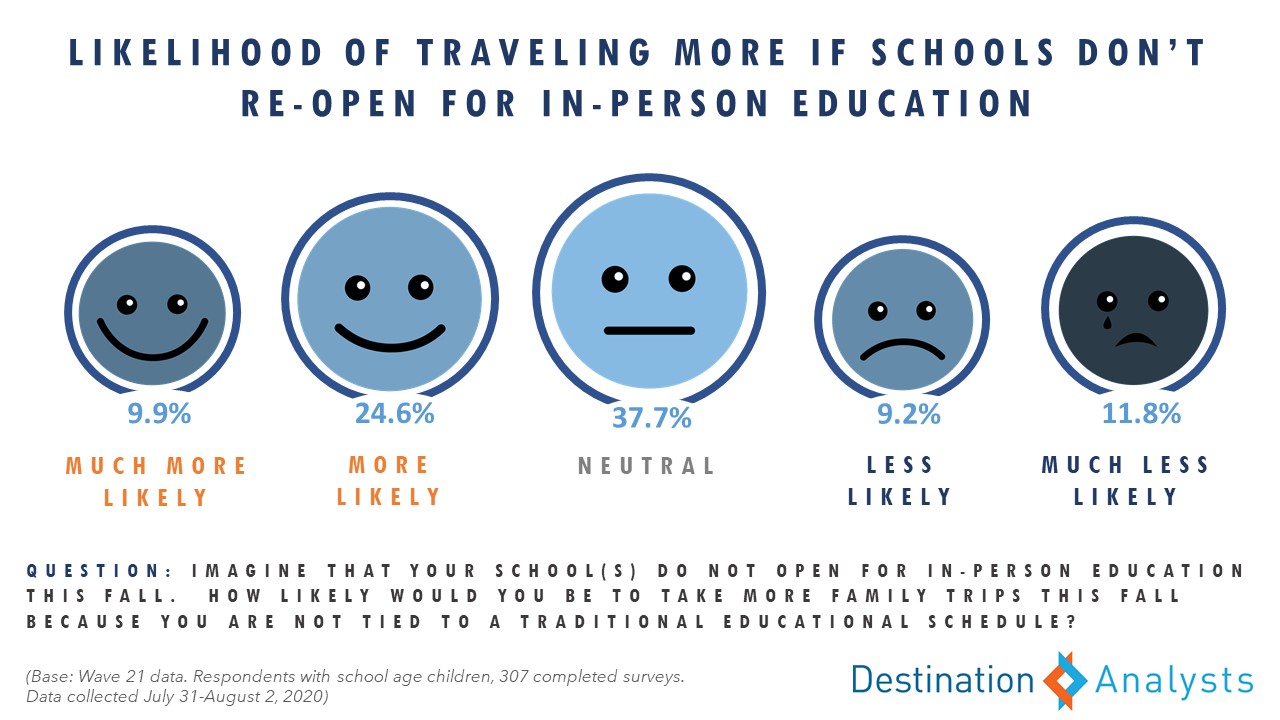Update on American Travel in the Period of Coronavirus—Week of August 3rd
While those with trip plans largely say they are headed to beaches and other nature-based destinations, over half of American travelers don’t have leisure trip plans for the remainder of 2020. Can they be motivated?
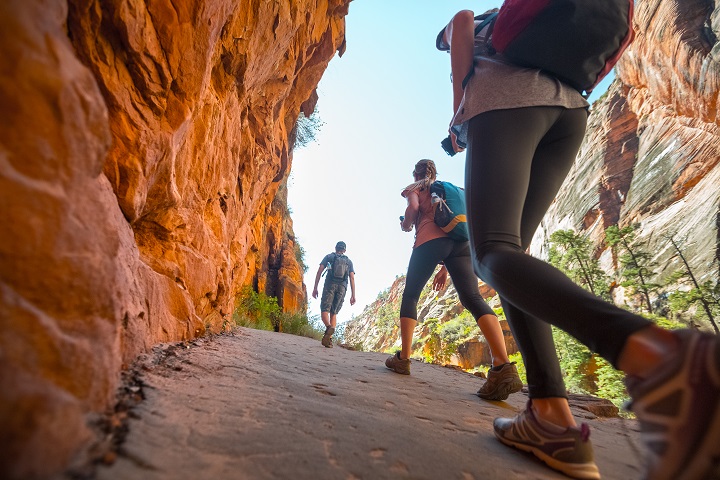
IMPORTANT: These findings are brought to you from our independent research, which is not sponsored, conducted or influenced by any advertising or marketing agency. Every week since March 15th, Destination Analysts has surveyed 1,200+ American travelers about their thoughts, feelings, perceptions and behaviors surrounding travel in the wake of the coronavirus pandemic, and explored a variety of topics. The findings presented below represent data collected July 31st-August 2nd.
Key Findings to Know:
- Many Americans shifted from feeling the pandemic would get worse in the next month to feeling things would be about the same.
- Concerns about personally contracting the virus have been elevated among Millennial travelers over the past month.
- The proportion of American travelers that say they would be happy to see an ad promoting their community for tourism when it is safe has receded to 29.1% from 35.8% at the end of June.
- Right now it appears the regional effects and response to the pandemic will have a lingering impact on destination brands. Nearly one-third of American travelers say they are less likely to visit the American destinations that they most associate with Coronavirus-related issues, even after the pandemic ends.
- American travelers are also more polarized in their travel readiness state of mind. While 48.5% report having leisure trip plans during one or more months in the remainder of the year, sadly, 51.5% do not currently have any leisure trip plans in 2020.
- Those who do not have trip plans this year are, unsurprisingly, more concerned about the virus, but interestingly less likely to be travelers that typically visited National Parks and other types of public lands prior to the pandemic.
- Among those that will be traveling in 2020, plans for their next trip are largely well-formed, with beaches, National Parks and other rural areas most cited as the destinations.
- Over one third of American travelers with school-age kids say they are more likely to take family trips this fall if their children do not have in-person education; 21% feel less likely.
A proportion of Americans shifted from feeling the pandemic would get worse in the next month (53.7% down from 61.5%) to feeling things would be about the same (30.3% from 23.8%). Still, relatively few think things will improve (16.0%). With reported cases increasing among younger people, concerns about personally contracting the virus have been elevated among Millennial travelers over the past month.
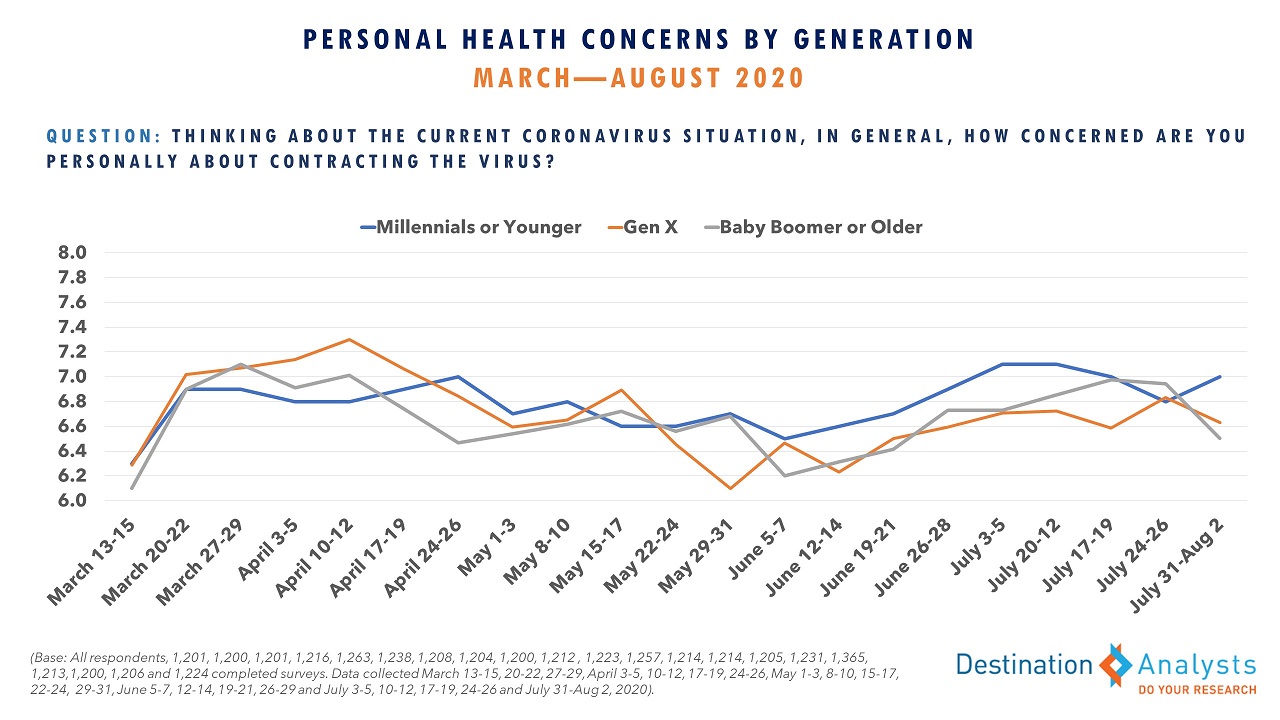
With these ongoing feelings about the pandemic, the proportion of American travelers that say they would be happy to see an ad promoting their community for tourism when it is safe has receded to 29.1% from 35.8% at the end of June.
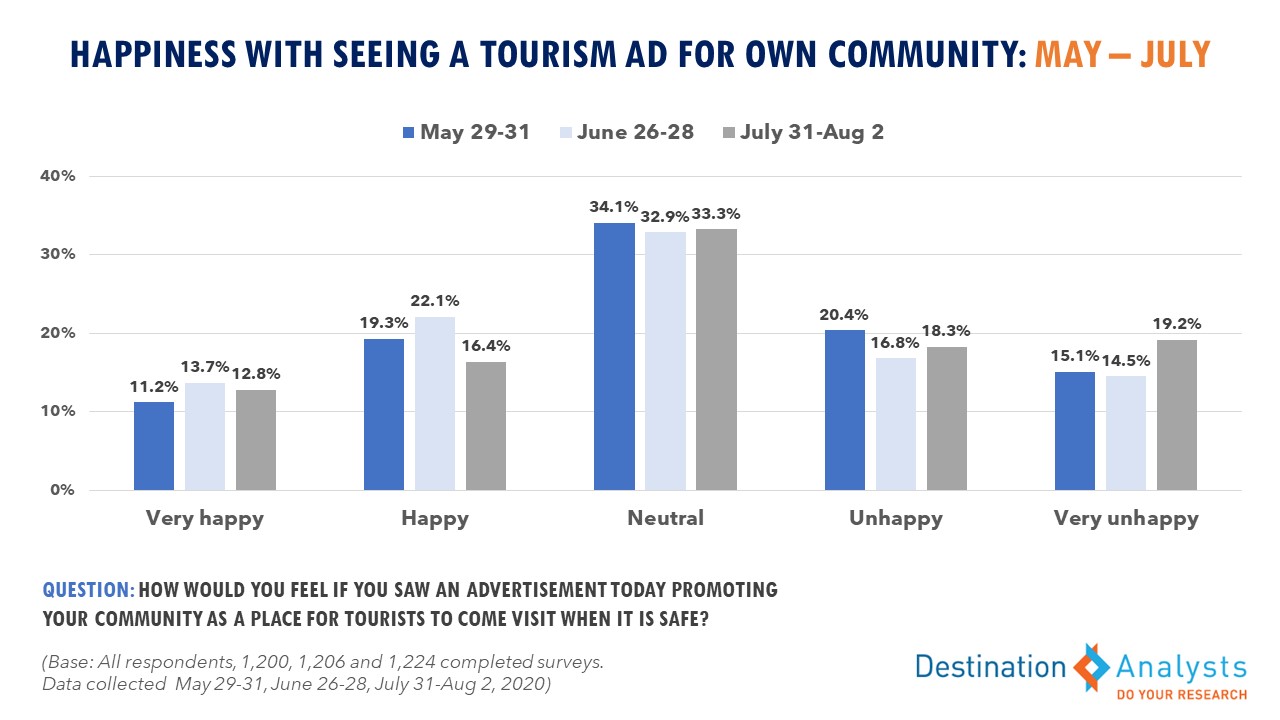
Right now it appears the regional effects and response to the pandemic will have a lingering impact on destination brands. Nearly one-third of American travelers say they are less likely to visit the American destinations that they most associate with Coronavirus-related issues, even after the pandemic ends. In addition, 53.7% say that if a destination they are currently interested in visiting experiences difficulty managing the coronavirus situation, they will be less likely to visit even after the pandemic is over.
American travelers are also more polarized in their travel readiness state of mind, being ready to travel versus not. While 48.5% report having leisure trip plans during one or more months in the remainder of the year, sadly, 51.5% do not currently have any leisure trip plans in 2020.
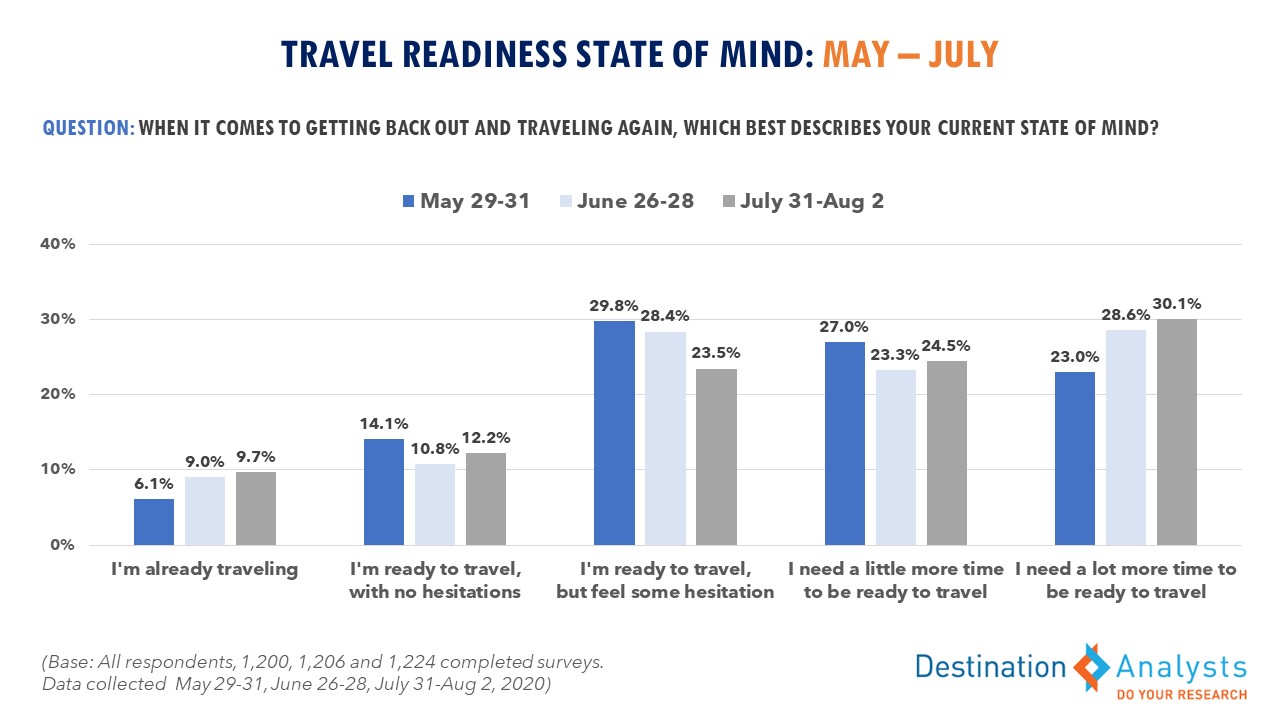
Those who do not have trip plans this year are, unsurprisingly, more concerned about the virus, and maintaining their safety from it has had a greater impact on their travel plans and their desire to travel. They look to currently be postponing travel to mid 2021. Compared to those who are taking trips this year, they don’t travel quite as often (an average of 4 leisure trips per year compared to 5), but are just as likely to be affluent and skew female. Interestingly, they are less likely to be travelers that typically visited National Parks and other types of public lands prior to the pandemic—currently the more popular destinations of choice for the coronavirus period—which perhaps is also impacting their decision not to travel right now.
Among those that will be traveling in 2020, plans for their next trip are largely well-formed, with beaches, National Parks and other rural areas most cited as the destinations.
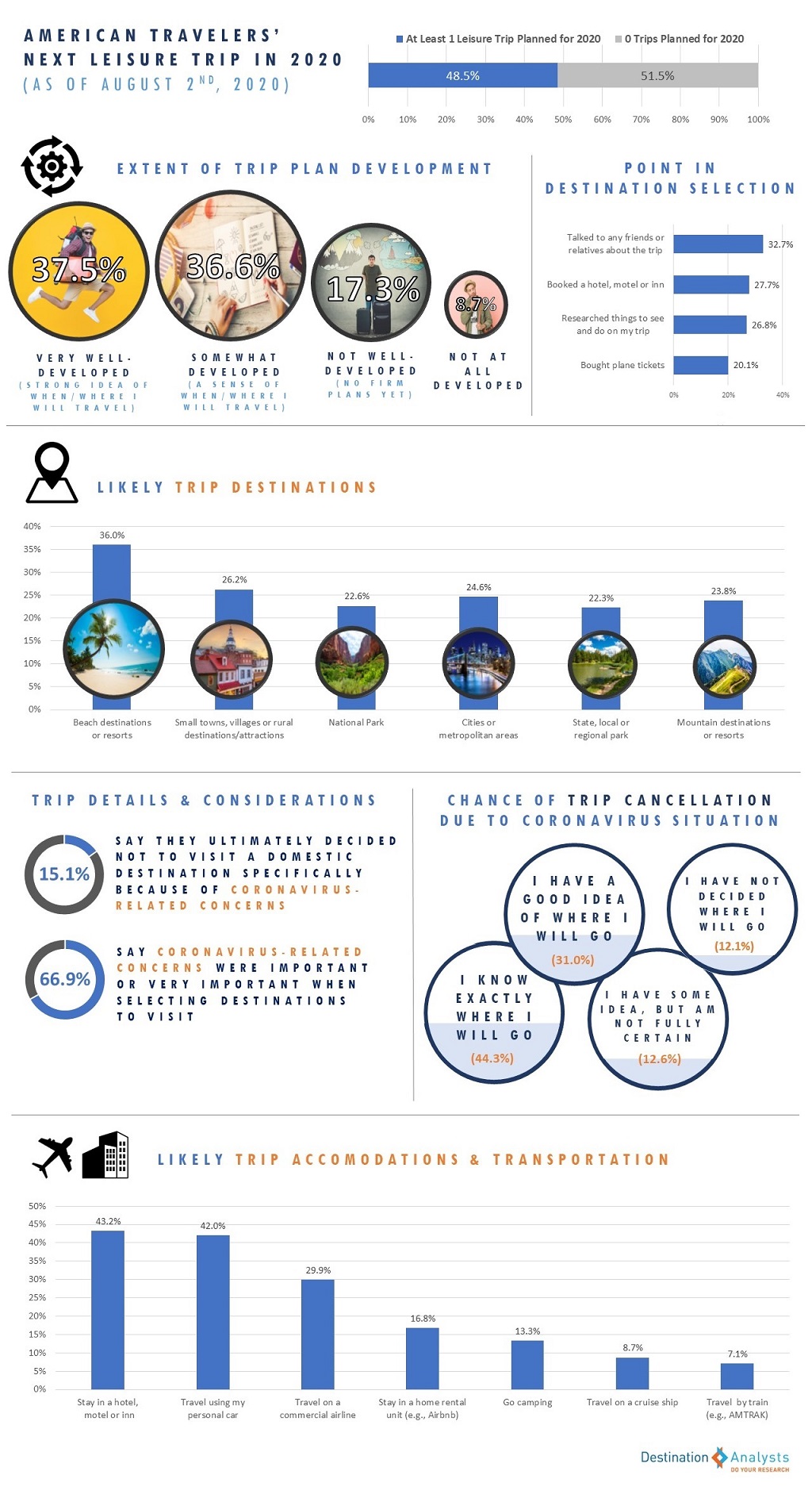
One of the segments more likely to have trip plans in 2020 are those with school-age kids. When parents of school-aged kids were asked about their likelihood to take family trips this Fall if their children do not have in-person education, 34.5% of these parents say they are more likely to take such trips; 21% feel less likely.
